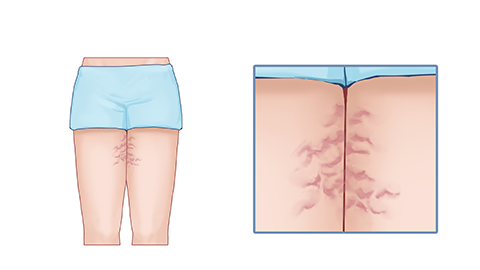How to repair scars
Scars may be caused by genetic predisposition, excessive tension, infection, acne scars, burn scars, and other factors. Improvements can be made according to different situations. It is recommended to seek medical attention at a hospital promptly and undergo treatment under the guidance of a physician.

1. Genetic predisposition: Genetic factors affect the structure and synthesis of collagen in the skin, leading to abnormal collagen deposition during the wound healing process and resulting in scars. Regular dermatological examinations, early wound intervention, and application of vitamin E oil can help reduce scar formation.
2. Excessive tension: Under high tension, fibroblasts become overly active, producing excessive collagen fibers, which leads to thickened and hardened scar tissue. The skin around the wound feels tight, the scar has a hard texture, and itching may sometimes occur. It is recommended to apply tension-reducing measures, such as silicone sheets or pressure bandages, to reduce tension, and combine with scar gels or ointments to promote softening and flattening of the scar.
3. Infection: If a wound becomes infected during the healing process, it may exacerbate scar formation, leading to hypertrophic or keloid-like scars. Infected areas may present with inflammatory symptoms such as redness, swelling, pain, and fever. Follow medical advice to use medications such as amoxicillin capsules, cefaclor capsules, or erythromycin ointment to control infection. Debridement and dressing changes may be necessary when required.
4. Acne scars: Acne can damage the skin's normal structure, triggering the body's repair response and forming scar tissue. The severity of scarring correlates with the severity of acne and individual differences, and may be accompanied by symptoms such as pigmentation, uneven skin texture, and enlarged pores. It is recommended to follow medical advice to undergo non-surgical treatments such as laser therapy, microneedling, or chemical peels. For severe scars, surgical excision or comprehensive treatment combining other therapies may be considered.
5. Burn scars: Burns can damage the skin's normal structure, triggering the body's repair response and forming scar tissue. The severity of scarring depends on the depth and extent of the burn. Mild scars can be treated with non-surgical methods such as laser therapy and microneedling, while severe scars may require surgical treatments such as excision or skin grafting.
Scar repair is a process that requires patience and attention to detail. Patients should actively cooperate with their physician's treatment plan and maintain healthy lifestyle habits and a positive mindset to promote scar recovery and healing.







